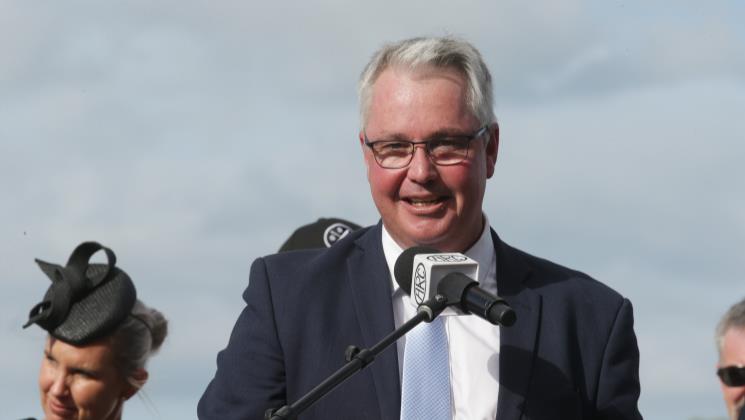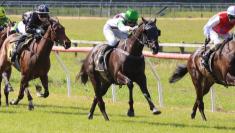
Pike pleased with Government stop-gap
Cambridge trainer Tony Pike. Photo: Trish Dunell
Cambridge trainer Tony Pike believes the $72.5 million dollar COVID-19 emergency support package for the racing industry announced by Minister for Racing Winston Peters on Tuesday has breathed life back into the $1.6 billion industry which has been halted by coronavirus.
The support package consists of $50 million relief grant for the Racing Industry Transition Agency (RITA); up to $20 million in funding to construct two new all-weather racetracks; and $2.5 million for the Department of Internal Affairs to fast track work on the online gambling revenue, and address loss of revenue impacts on community and sport groups.
“It is obviously huge for the industry,” Pike, who is the President of the New Zealand Trainers’ Association, said.
“Without government support the TAB, or RITA were heading west.
“By the sounds of it, they hadn’t been paying suppliers for a while, with $26 million to clear their current liabilities. This provides us with enough money to carry on until domestic racing gets back on track in addition to sports and gaming.
“There is a big restructure going on at RITA and it looks like a fair bit has been leaked by a disgruntled employee I would say seeing what was coming out yesterday (Monday), when it is still very much up for negotiation.
“Obviously they are going to streamline the business significantly. If we can get domestic racing back up and going, sports betting and gaming back on track, then hopefully there is going to be more coming out the other end that can be distributed to the codes.”
Racing broadcaster Trackside was one of the areas earmarked for cost-savings but Pike was acutely aware of the importance of racing’s shop front.
“From a personal point of view, yes it needs streamlining but we still need a promotion of domestic racing and some sort of coverage to drive turnover domestically.
“Hopefully they don’t cut that too much to the bone because that is your shop front delivering to people out there, both from an ownership and punting point of view.”
With a synthetic track already well under way in Cambridge, a further two all-weather surfaces are slated for Riccarton and Awapuni and are expected to play a role in both centralising racing and reducing costs through efficiencies, in addition to providing reliable training and racing surfaces throughout the winter.
“There is a world-wide acceptance for them now as a consistent betting product and obviously they will help us significantly through our wettest four or five months of the year,” Pike said.
“That money has been ring-fenced for two synthetic tracks. Obviously they will cost more than $10 million each but it is up to RITA, NZTR and the clubs involved to work out a funding agreement around the extra costs to build those.
“I think three of them around the country will be very good going forward.”
It has now been two weeks since training resumed on public training tracks in New Zealand and Pike said the majority of his owners had been resilient to date.
“We have had owners have a close look at their bloodstock portfolio of the horses that they are racing and we are probably lucky enough we haven’t at this stage lost a large number.
“A lot of people with horses that had either reached their mark or had looked limited in their previous preparation, the owners have decided not to put them back into work. There is talk around a number of proven horses that could be headed to Australia.
“Personally I haven’t been too affected at this stage. A lot of owners are keen to see what happens going forward. If RITA can come up with a good business plan and give us some light at the end of the tunnel, then hopefully we can come out of this not too badly affected.”
The Cambridge horseman said May was traditionally a quieter period at the Cambridge track, Australasia’s busiest training centre.
“The numbers are probably down a bit but that is probably the time of year here at Cambridge as well,” Pike said.
“Talking with Murray Baker, he said he had quite a few to come back in next month.
“It is pretty much business as usual. I think you will see some reduction in the number of horses racing but obviously it will depend on what happens in the next six months and how quickly they can turn the business around now they have the capital injection.”
For those outside of racing questioning the government relief package for the industry, Pike was quick to point out what a substantial contributor it is to the New Zealand economy, as well as employing 15,000 people full-time.
“For people at the coalface, it is not considered a gambling industry,” he said. “It employs a huge number of people and an enormous amount of care is taken looking after the horses and we are renowned on the world stage.
“It is a stimulator for the local economy. Areas like Cambridge and Matamata, their local economies rely heavily on the thoroughbred industry.
“It is a massive export earner with horses being sold overseas and income coming from overseas investors who support breeding and training in New Zealand.”









